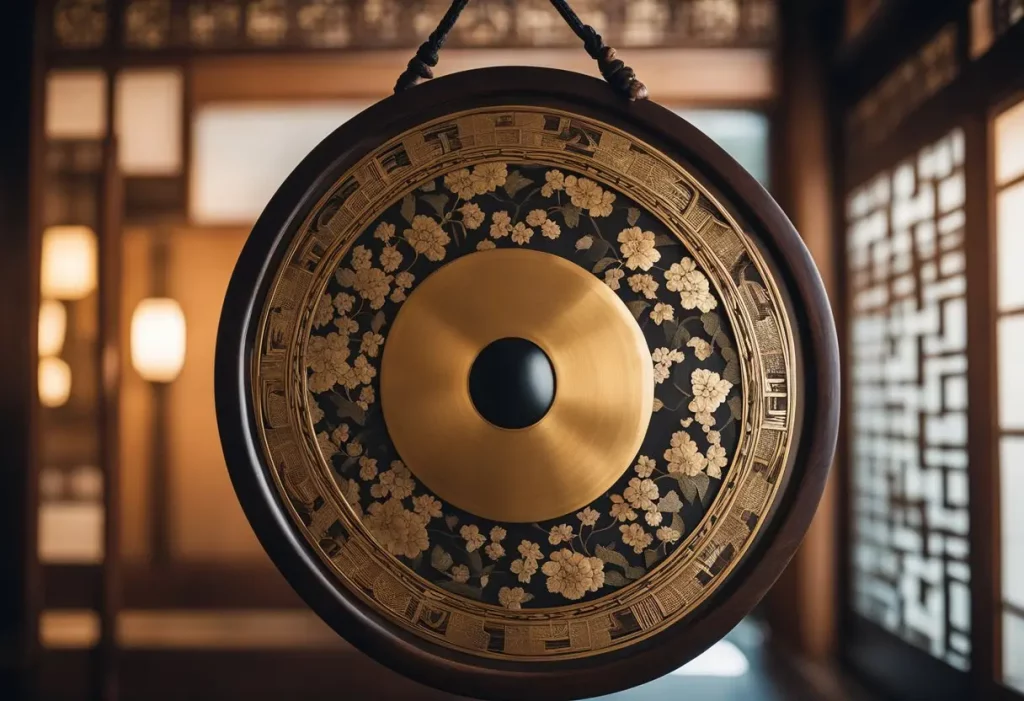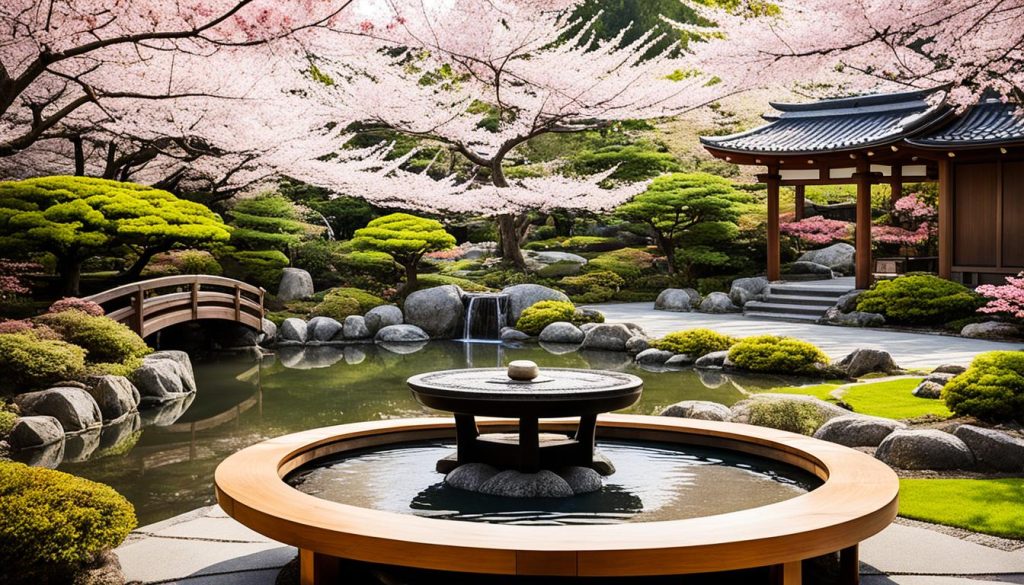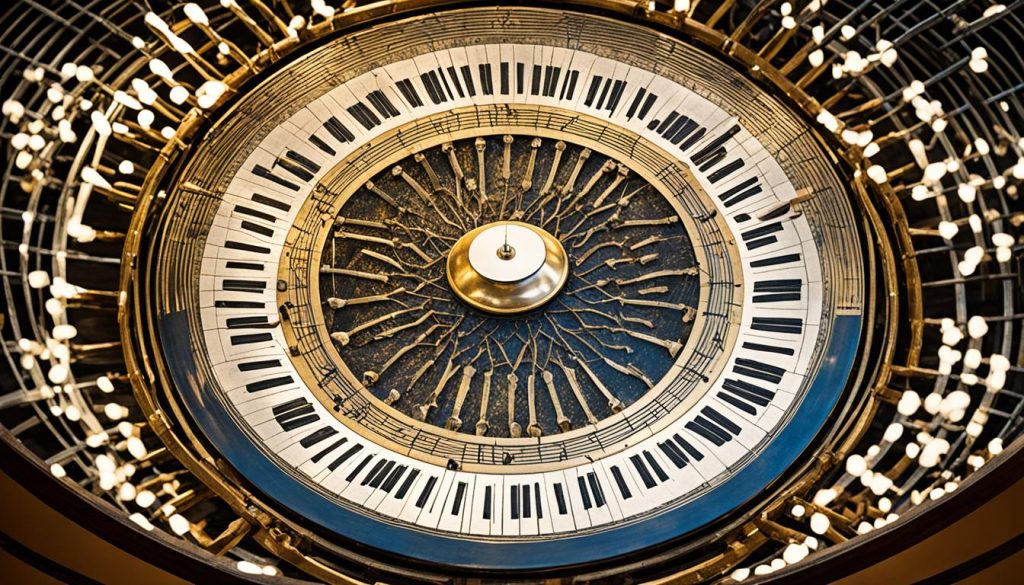When you hear the word “gong,” what comes to mind? Is it a traditional Chinese instrument, or perhaps a Japanese one?
The origin of the gong may not be as straightforward as it seems. Exploring its rich history and cultural significance will reveal surprising insights about this fascinating percussion instrument.
Join us on a journey through time and across continents as we uncover the truth behind the gong’s heritage. From its ancient beginnings in East Asia to its global influence today, discover the captivating story of this enigmatic instrument.
So, is the gong Chinese or Japanese instrument? The answer may not be as simple as you think.

Content
History of the Gong
The history of the gong can be traced back to the Bronze Age, around 2000 BC. Archeologists have discovered ancient gongs in various regions, including present-day Indonesia, Burma, China, and Vietnam.
Throughout history, the gong has held immense cultural and spiritual symbolism in different societies, symbolizing mysticism and good fortune in East Asia.
The presence of gongs in tombs and their use in ceremonies and rituals further emphasize their prominence in ancient civilizations.
In East Asia, gongs were believed to possess mystical powers and were often used to ward off evil spirits and attract positive energy. They were also regarded as symbols of strength and protection.
In the Western world, gongs gained popularity during the 18th century and became an integral part of classical music compositions.
They were cherished for their distinct sound and seen as exotic display pieces in private collections, evoking a sense of fascination and curiosity.
Types of Gongs
Gongs are diverse in their construction and purpose, offering a wide range of options for musicians and enthusiasts. Here are some of the main types of gongs:
Suspended Gongs
Suspended gongs are flat circular gongs that are vertically suspended by a cord. When struck, they produce an indefinite pitch and a rich, resonant sound.
These gongs are commonly used in orchestras, where they add depth and texture to musical compositions.
Nipple Gongs
Nipple gongs, also known as bossed gongs, feature a raised boss or knob in the center of the gong. These gongs are often found in traditional ensembles, such as the kulintang music of the Philippines. The bossed design creates a focused sound with distinct tonal characteristics.
Sculptural Gongs
Sculptural gongs are not only musical instruments but also works of art. They are crafted with intricate designs and shapes, showcasing the skill and creativity of the artisans. These gongs serve both visual and auditory purposes, adding aesthetic appeal to any space.
Bowl Gongs
Bowl gongs, also known as singing bowls, have a distinct bell-like sound. They are typically struck or rubbed to produce resonant tones. These gongs are often used in meditation practices, as the soothing vibrations and harmonics create a calming and peaceful atmosphere.
Each type of gong has its own unique characteristics, allowing musicians and performers to explore different sounds and aesthetics.
Whether it’s the suspended gongs creating a dramatic orchestral ambiance or the sculptural gongs adding an artistic touch, the variety of gongs ensures a rich and diverse musical experience.
| Gong Type | Description |
|---|---|
| Suspended Gongs | Flat circular gongs suspended vertically with a cord. Produces indefinite pitch. Commonly used in orchestras. |
| Nipple Gongs | Gongs with a raised boss or knob in the center. Often found in traditional ensembles like kulintang. |
| Sculptural Gongs | Artistic gongs that serve as both musical instruments and decorative pieces. |
| Bowl Gongs | Also known as singing bowls. Produces a bell-like sound when struck or rubbed. |
In this section, we explored the various types of gongs, including suspended gongs, nipple gongs, sculptural gongs, and bowl gongs.
Each type offers its own unique sound and characteristics, allowing musicians to create a diverse range of musical experiences.
Gong in Chinese Culture
The gong holds significant cultural importance in Chinese tradition. It has been used for ceremonial functions, healing rituals, and as a symbol of strength and power.
Chinese gongs were often inscribed with Mandarin symbols representing happiness and were associated with mysticism and good fortune.
Throughout Chinese history, gongs were integral to religious and spiritual practices. They were used in temples and palaces to create a divine atmosphere and invoke positive energy.
The resonating sound of the gong was believed to connect the earthly and heavenly realms, making it a vital instrument in religious ceremonies.
In addition to its sacred significance, the gong also played a role in social and public events. It was used to mark important occasions, such as the beginning and end of festivities or the arrival of important guests.
The powerful and commanding sound of the gong made it an ideal instrument to grab people’s attention and signify the start or conclusion of significant events.
The gong’s symbolism in Chinese culture extends beyond its use in rituals and events. It is also associated with strength, power, and resilience.
The gong’s ability to produce deep, resonant tones embodies the notion of grounding and stability. It is seen as a symbol of inner strength and the ability to overcome challenges.
In Chinese opera, the gong is an essential instrument, used to accompany performances and enhance the dramatic effect. It adds depth and intensity to the music, making it more emotionally compelling for the audience.
In modern times, Chinese gongs have found their place in symphony orchestras, thanks to the great composers who recognized their unique sound and cultural significance.
Pieces like Richard Wagner’s “Die Meistersinger von Nürnberg” and Peter Ilyich Tchaikovsky’s “1812 Overture” feature the powerful and commanding sound of the gong.
Gong in Japanese Culture

The gong also holds cultural significance in Japanese tradition. It is used in Buddhist memorial services, kabuki music, and as a ship departure signal. Japanese gongs, known as doras, are made of bronze, brass, or iron and are suspended onto gong stands.
They are considered an important part of traditional Japanese music ensembles and are used in various performances. The gong has a unique sound and is an idiophone instrument in Japanese culture.
Gong in Western Orchestral Music

The gong has played a prominent role in Western orchestral music since the 18th century. Renowned composers like François Joseph Gossec, Richard Wagner, and Hector Berlioz incorporated gongs into their symphony orchestras, making them a standard instrument in the percussion section.
In their compositions, the gong was skillfully employed to evoke dramatic or mournful tones, adding a touch of exoticism to Western classical music.
Even composers like Peter Ilyich Tchaikovsky and Gustav Mahler recognized the unique sound and impact of the gong, utilizing it in their symphonies.
Gong Usage in Western Orchestral Music
To better understand the role of the gong in Western orchestral music, let’s take a closer look at its usage in different musical contexts:
| Composition | Composer | Gong Usage |
|---|---|---|
| Symphony No. 4 | Peter Ilyich Tchaikovsky | The gong adds a powerful and striking effect during climactic moments, emphasizing the emotional intensity of the symphony. |
| Symphony No. 5 | Gustav Mahler | The gong’s deep resonant sound is used to create a haunting atmosphere in the symphony’s funeral march. |
| La Mer | Claude Debussy | The gong’s shimmering and ethereal tones are employed to evoke the imagery of the sea, adding a sense of mystery and splendor. |
These examples illustrate how composers strategically incorporated the gong’s unique qualities to enhance the emotional impact and sonic palette of their compositions.
The gong’s presence in Western orchestral music continues to be valued for its ability to add depth, drama, and a touch of exoticism to classical compositions.
Modern and Global Gong Influence
The gong’s influence extends beyond traditional and classical music. In the 20th century, the use of gongs continued to evolve, with experiments in orchestral music and film scores.
The gong became a popular symbol of the exotic East in visual culture, and its sound became familiar to cinema-goers.
As globalization increased, gongs spread to different parts of the world and became a part of various musical genres. Today, they are used in contemporary music and continue to captivate audiences worldwide.
To illustrate the global gong influence, here is a table showcasing notable modern musical genres and artists that incorporate gongs in their compositions:
| Modern Musical Genre | Notable Artists |
|---|---|
| Ambient | Brian Eno |
| New Age | Kitaro |
| Experimental | John Cage |
| World Fusion | Nitin Sawhney |
| Electronic | Jon Hopkins |
These artists have embraced the gong’s unique sound and integrated it into their musical compositions, adding a touch of mysticism and cultural richness to their work.
Conclusion
So, is the gong Chinese or Japanese instrument? The gong is a versatile and culturally significant instrument that has its roots in East Asian and Southeast Asian cultures.
With a history dating back to ancient civilizations, the gong has played a prominent role in traditional ceremonies, music, and rituals.
Originating in Chinese and Indonesian regions, the gong has become a global phenomenon, spreading its influence to Western classical music and contemporary genres.
From ancient rituals and ceremonies to modern performances, the gong continues to be a cherished instrument that embodies the mysticism and spirituality of East Asian and Southeast Asian cultures.
As we appreciate its history, the gong reminds us of the interconnectedness of cultures and the power of music to transcend borders.
